Top 5 Sustainable Forest Management Strategies to Reduce Wildfire Risks
- August 15, 2024
- 0 comment
Sustainable forest management is crucial for protecting forests for future generations and reducing wildfire risks. As essential natural resources, forests produce oxygen, support economic growth, and provide habitats for countless species.

With the increasing frequency and severity of wildfires due to climate change and human activities, implementing sustainable forest management practices is more important than ever. Understanding the significance of forest management in wildfire prevention and employing effective strategies can help mitigate these risks and preserve these vital ecosystems.
Importance of Forest Management
Forests Sustainably play a crucial role in mitigating the onset of wildfires. In the United States, wildfires have caused significant land area damage, with burned acreage rising from 5% to 23% annually between 1984 and 2020. The 2020 wildfire season was particularly alarming, with 58,950 fires destroying over 1 million acres (405,000 hectares) of forest. California, in particular, has been highly susceptible to burns, with more than 2 million properties at high risk of destruction in 2021. These fires have resulted in hundreds of millions of dollars in environmental, social, and economic damages, uprooting lives and destroying livelihoods. In response, California’s annual fire suppression expenditures rose to $401 million in 2019, up from $25 million in 1989.
Global warming exacerbates these challenges by driving extreme heat waves and prolonged droughts, making wildfire events more widespread. However, weather is not the only contributing factor; 89% of wildfires occur due to irresponsible human activities, such as poorly lit campfires, malfunctioning equipment, discarded cigarettes, and arson. To meet the forests’ needs and prevent severe fire events in the future, sustainable forest management is necessary.
List of Top 5 Strategies of Forest Management
Sustainable forest management focuses on fire prevention strategies to protect the land from fire outbreaks and control the spread. Here are five methods forest managers can use when developing sustainable forestry practices for wildfire prevention.
1. Reducing Vegetation
Reducing vegetation may seem counterproductive to maintaining healthy, thriving forests, but crowded trees, shrubs, and other flora can fuel the spread of fires. Forest managers may create fire breaks—open land areas cleared of wild vegetation and natural debris—as part of their sustainable forest management plans.
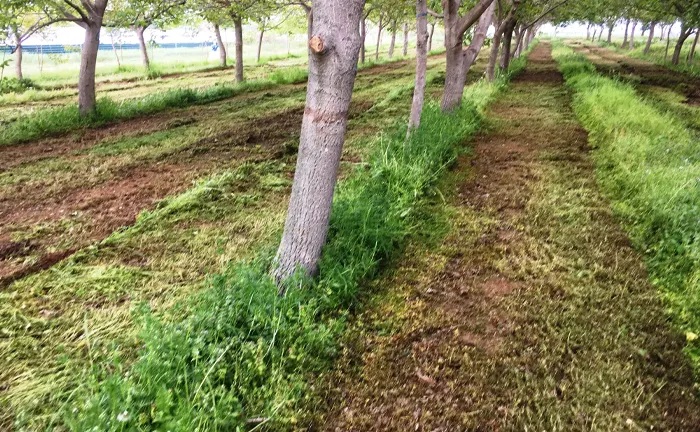
This approach involves the use of heavy equipment, such as brush cutters and front loaders, to efficiently cut through dense grasses and transport debris to another location.
By strategically reducing vegetation, forest managers can limit the fuel available for wildfires, making it easier to control and suppress fires before they spread extensively. This strategy is particularly effective in regions with dense undergrowth and significant fuel loads, where fire breaks can create natural barriers that slow down or halt the progress of wildfires.
2. Spacing Trees Properly
Proper tree spacing is another effective strategy for wildfire prevention. Planting trees with ample space between them allows for better growth and reduces the risk of fire spread. The expected canopy diameter often determines tree spacing. For example, evergreens should be spaced 6 to 10 feet (1.8 to 3 meters) apart, while deciduous trees require a distance of 4 to 8 feet (1.2 to 2.4 meters) between them.

When trees have some separation, wildfires are easier to suppress and have less chance of spreading. Proper tree spacing also promotes healthier forests by reducing competition for resources such as sunlight, water, and nutrients, leading to stronger, more resilient trees.
3. Tree Thinning
Tree thinning is a crucial part of sustainable forest management, involving the removal of dead or diseased trees to create more space between susceptible vegetation. Dead trees and debris can serve as fuel for wildfires, and their removal is essential to reduce fire risk. Tree thinning is especially beneficial in regions with less precipitation, such as western states and parts of the South, where dry conditions make forests more vulnerable to fires.

Current efforts at Caribou-Targhee National Forest in Yellowstone National Park exemplify the importance of tree thinning. Crews of scientists and land managers have initiated efforts to remove trees considered high-risk for widespread forest fires. This proactive approach helps maintain healthier forests and reduces the potential for destructive wildfires.
4. Plant Resilient Trees
Maintaining optimal forest health should be the top priority when developing sustainable forest management plans for wildfire prevention. Planting fire, drought, and rot-resistant trees is a key strategy in this regard. Certain tree species are more resilient to environmental stresses and can better withstand the challenges posed by climate change and wildfires.

For example, root rot can be isolated among a small cluster of pine trees or scattered throughout the forest, often caused by infection. However, by planting trees well-adapted to the area, forest managers can reduce the prevalence of root rot and other diseases that weaken trees and increase fire risk.
Additionally, heart rot, a disease that speeds up decay and leads to hollowed insides and breakage, affects 75% of merchantable hardwood timber in the South. Planting resilient tree species can help prevent the onset of heart rot and maintain healthier forests less susceptible to wildfires.
5. Monitor for Pests
Pest infestations pose a significant threat to forest health and can exacerbate wildfire risks. As the planet warms, pest infestations become more prevalent, and insects like bark beetles infiltrate trees under high stress, making them more vulnerable to disease and die-offs. Monitoring for pests is an essential component of sustainable forest management.

An integrated approach to pest management is most suitable for sustainable forestry. This involves targeting an insect’s weak points throughout its life cycle and providing proper forest care. Adaptive control that examines current forest conditions, develops sound management decisions, and sets measurable benchmarks is an ideal way to retain forests and prevent wildfires.
By actively monitoring for pests and implementing effective pest management strategies, forest managers can mitigate the impact of infestations and reduce the vulnerability of forests to wildfires. This proactive approach helps maintain healthier ecosystems and supports long-term forest sustainability.
Protecting Forests With Sustainable Wildfire Prevention
Sustainable forestry cannot prevent all climate change or human-induced fire events, but it can avoid worsening fire damage. With a well-developed fire prevention strategy, forest managers can better plan for and mitigate wildfires, protecting valuable forest resources. By implementing the five sustainable forest management strategies outlined above, we can reduce the risk of wildfires, preserve biodiversity, and ensure the long-term health and resilience of our forests.
As climate change continues to pose challenges to forest ecosystems, sustainable forest management practices become increasingly crucial. By prioritizing wildfire prevention and adopting eco-friendly forestry practices, we can safeguard our forests for future generations and contribute to a healthier planet.
Final Conclusion
Wildfires pose a significant threat to forests worldwide, impacting ecosystems, economies, and human lives. Implementing sustainable forest management strategies is essential for wildfire prevention and long-term forest health. Reducing vegetation, proper tree spacing, tree thinning, planting resilient species, and monitoring pests are key strategies that forest managers can use to minimize wildfire risks. These efforts, combined with public awareness and collaboration, can help protect forests and ensure their sustainability for future generations.
As we face the challenges of climate change and increasing wildfire events, it is crucial to prioritize sustainable forestry practices and support initiatives that promote forest conservation and resilience. By working together, we can safeguard our forests and create a more sustainable future.
Frequently Asked Questions (FAQs)
- Why is sustainable forest management important for wildfire prevention?
Sustainable forest management is crucial for maintaining healthy forests and reducing wildfire risks. By implementing eco-friendly practices, forests can be better protected against fire outbreaks and long-term environmental damage. - How does reducing vegetation help prevent wildfires?
Reducing vegetation helps prevent wildfires by removing potential fuel sources. Clearing dense trees, shrubs, and natural debris can create fire breaks, which limit the spread of fires and make them easier to control. - What is the significance of proper tree spacing in forest management?
Proper tree spacing is essential to prevent the rapid spread of wildfires. By ensuring adequate space between trees, fire can be contained more effectively, reducing the risk of widespread damage. - How does tree thinning contribute to wildfire prevention?
Tree thinning involves removing dead or diseased trees, which can fuel fires if left unchecked. This process creates more space between vegetation, reducing the risk of wildfires and promoting healthier forest ecosystems. - What types of trees should be planted for better wildfire resistance?
Forest managers should plant trees that are resistant to fire, drought, and diseases like root rot. Choosing species that are well-adapted to local conditions can enhance forest resilience and reduce the likelihood of fire outbreaks. - How does monitoring for pests aid in wildfire prevention?
Monitoring for pests helps identify and manage infestations that can weaken trees and increase fire risks. Effective pest management involves targeting insects at various life stages and implementing adaptive control measures to maintain forest health. - What role does climate change play in increasing wildfire risks?
Climate change contributes to more frequent and severe wildfires by creating conditions such as extreme heat waves and prolonged droughts. These conditions make forests more susceptible to fire outbreaks and increase the difficulty of fire management. - How can public awareness and education contribute to wildfire prevention?
Public awareness campaigns and educational programs can promote responsible behavior and reduce human-caused fire incidents. By informing communities about wildfire risks and prevention strategies, individuals can play a vital role in protecting forests. - What are the economic impacts of wildfires on affected regions?
Wildfires can cause significant economic damage by destroying properties, infrastructure, and natural resources. They also increase fire suppression costs and can disrupt local economies and livelihoods. - How can collaboration between stakeholders enhance wildfire prevention efforts?
Collaboration between government agencies, environmental organizations, scientists, and local communities is essential for developing comprehensive wildfire prevention plans. Working together ensures that resources and expertise are effectively utilized to protect forests and promote sustainability.

Gilbert Griffin
Forestry AuthorGilbert Griffin is a forest management expert specializing in sustainable practices, forest health, conservation, and land management. With extensive knowledge in pest control, disease management, and habitat restoration, Gilbert develops strategies to preserve forest ecosystems and biodiversity. Passionate about the natural world, Gilbert adapts to changes in forest management and stays updated through continuous learning. Gilbert also provides seasonal advice to optimize forest care throughout the year.




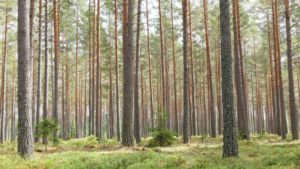
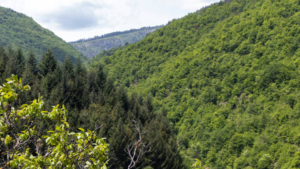



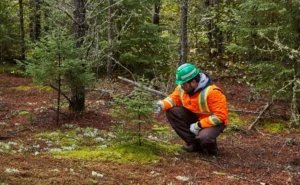
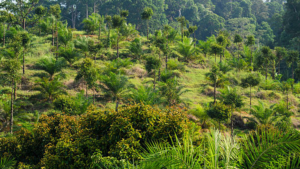
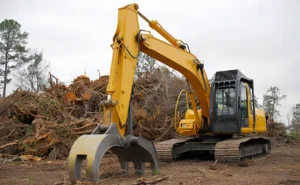
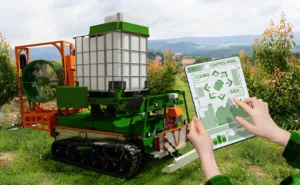
Leave your comment